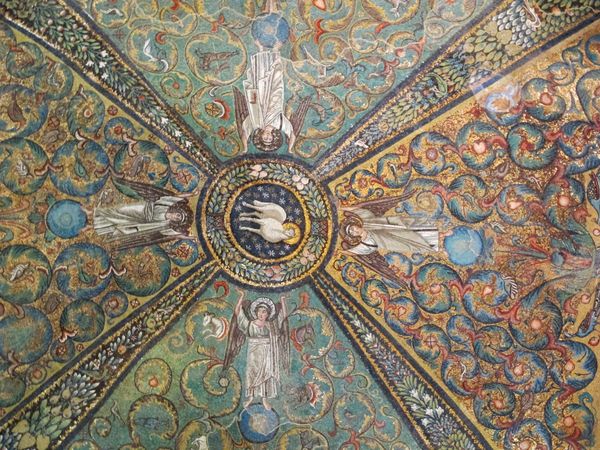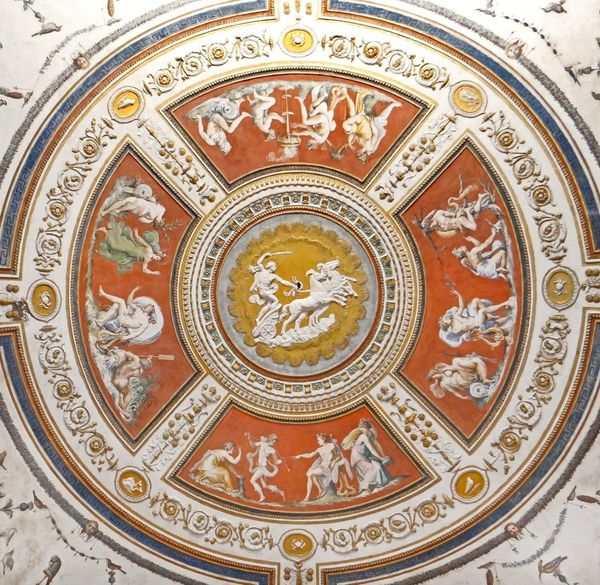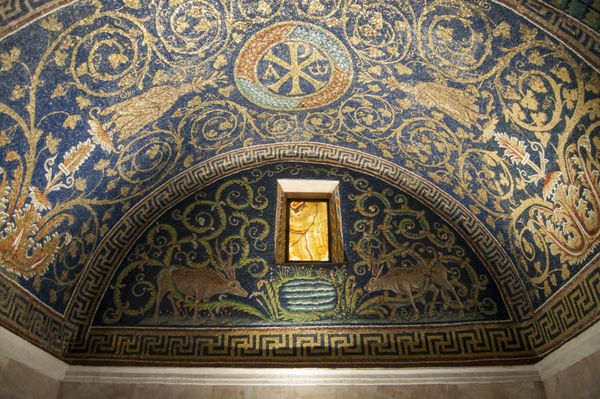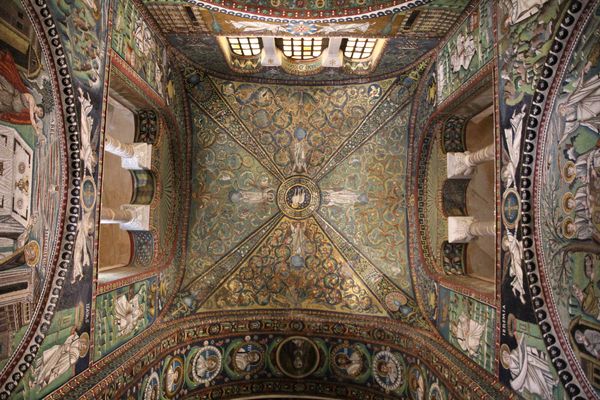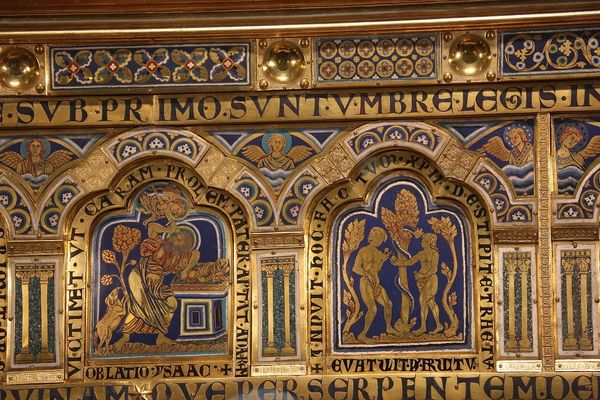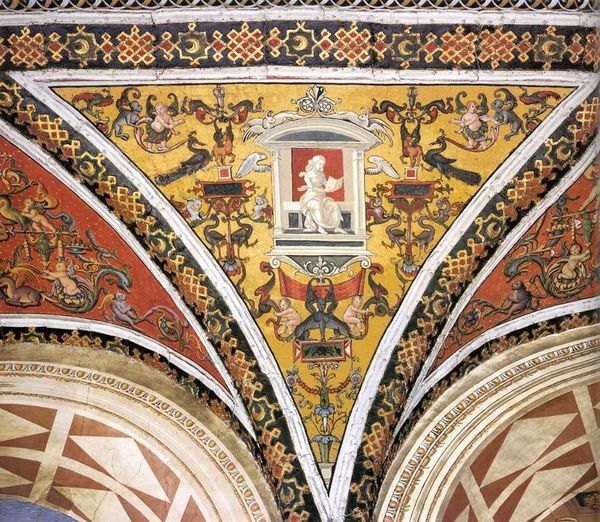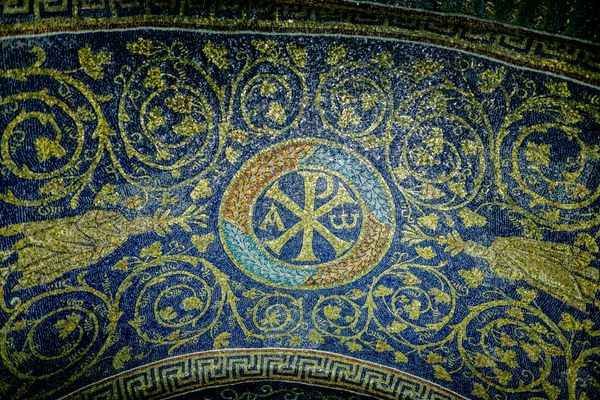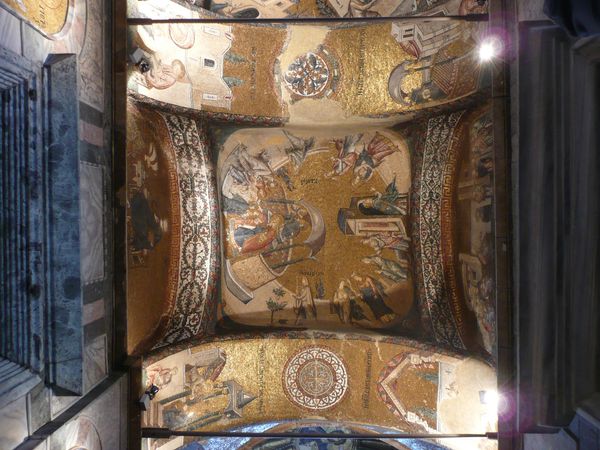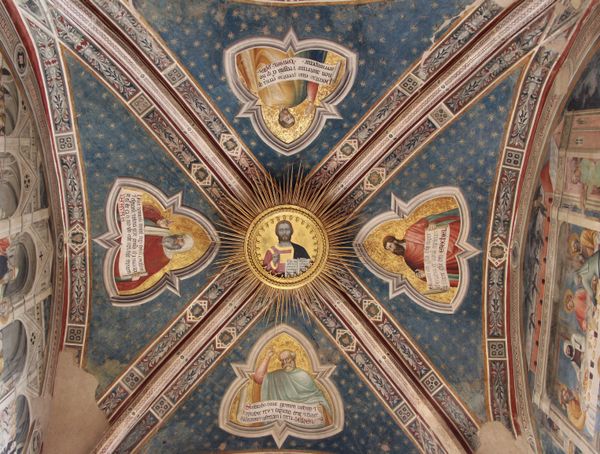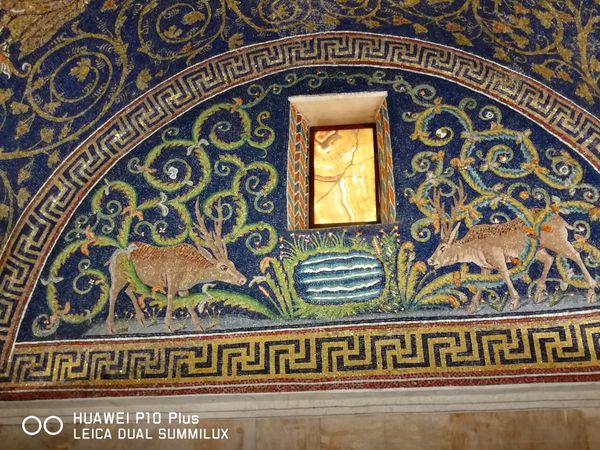
mosaic, fresco, architecture
#
mosaic
#
byzantine-art
#
landscape
#
figuration
#
historic architecture
#
fresco
#
geometric
#
ancient-mediterranean
#
arch
#
architectural
#
architecture
Copyright: Public domain
This mosaic, made by Byzantine artists in the Mausoleum of Galla Placidia in Ravenna, envelopes us in a world of rich blues and shimmering gold. The lunette above the entrance is dominated by the symmetrical arrangement of two stags approaching a stream, flanking a window which punctuates the center. Note how the composition is divided into distinct registers, each framed by decorative borders. The lowest register focuses on earthly, natural imagery; above it, a field of intricate vine-like patterns is inhabited by birds, leading our gaze upward. Higher still, the ceiling transitions into a more abstract, geometric pattern that directs our eyes to the apex, where we find a Chi-Rho symbol, a traditional Christian symbol. The mosaic’s power lies in how it combines naturalistic elements with formal design, creating an environment that is both decorative and symbolic. The balance between representational and abstract forms is key to its enduring appeal. We can continually reinterpret the work as a cultural artifact, allowing for a rich and dynamic understanding of its meaning.
Comments
No comments
Be the first to comment and join the conversation on the ultimate creative platform.
